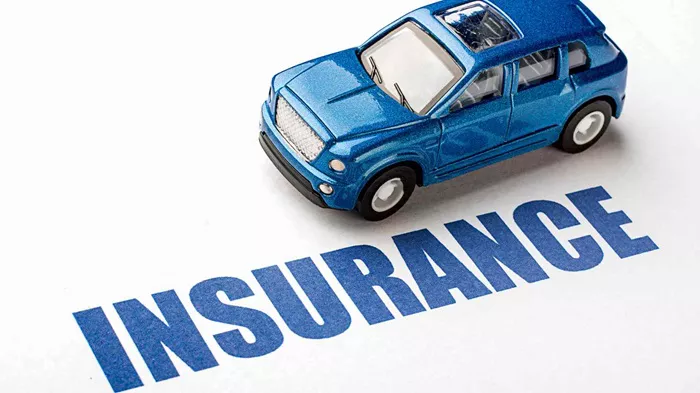If you’re thinking about buying an RV or already own one, you’ve probably asked yourself this simple question: How much does rv insurance really cost each year? It’s a smart question. Insurance is one of the key parts of owning an RV, whether you’re a weekend traveler or living full-time on the road.
This article breaks down the average RV insurance cost, what affects the price, what’s included in a typical policy, and how to save money without cutting important coverage. Everything is written in plain, easy-to-follow language—no complicated terms or confusing math.
Why Do You Need RV Insurance?
Before talking about costs, let’s cover why you need RV insurance in the first place. RVs are much more than vehicles—they’re homes on wheels. That means they need a mix of auto and home insurance features.
RV insurance protects you from things like:
Accidents
Theft
Fire
Storm damage
Injuries to others
Damage you cause to someone else’s property
Breakdowns and towing needs
In most states, insurance is also legally required, especially for drivable RVs like motorhomes.
What Is the Average Cost of RV Insurance?
There isn’t one fixed price for RV insurance. It depends on many factors, which we’ll explain in a moment. But to give you a rough idea:
For a travel trailer or camper, insurance might cost between $250 to $500 per year.
For a Class C motorhome, you might pay around $800 to $1,500 per year.
For a Class A luxury motorhome, you could pay anywhere from $1,200 to $3,000 or more per year.
Again, these are just average ranges. Your actual price could be higher or lower.
What Affects the Cost of RV Insurance?
Several things affect how much you’ll pay. Here are the most important ones, explained simply:
1. Type of RV
The bigger and more expensive the RV, the more it costs to insure. A pop-up camper costs a lot less to cover than a 40-foot diesel motorhome. That’s because repairs and replacement costs are higher for larger, more complex RVs.
2. Usage
Do you use your RV just a few weekends a year? Or do you live in it full-time? The more time you spend on the road, the higher the risk—and the more you’ll pay for coverage.
Part-time RVers usually pay less.
Full-timers need special coverage and usually pay more.
3. Location
Where you live (or register your RV) can change your insurance rate. States with more traffic, storms, or theft may have higher premiums. Some areas also have higher repair costs.
4. Driving Record
Just like with regular car insurance, your driving history matters. Clean records usually mean lower rates. If you’ve had accidents or tickets, expect to pay more.
5. Claims History
If you’ve made past insurance claims, you may pay more in the future. Insurers look at your history to see how risky you might be.
6. Coverage Levels
Do you want just the basic liability coverage? Or do you want full protection with extras like roadside assistance, replacement cost, and personal belongings coverage?
More coverage means more cost—but also more peace of mind.
7. Deductibles
A deductible is the amount you pay before insurance kicks in. Higher deductibles usually lower your premium. Just make sure you can afford the deductible if you have to use it.
What Does a Typical RV Policy Include?
Now that you have a rough idea of how much it might cost, let’s look at what’s included in a standard RV insurance policy.
Liability Coverage
This is required by law and covers injuries or damage you cause to others. It’s the most basic part of any policy.
Comprehensive Coverage
This protects your RV from things like theft, vandalism, fire, and weather damage—when you’re not driving.
Collision Coverage
This pays to fix or replace your RV if you crash, regardless of who’s at fault.
Uninsured/Underinsured Motorist
If someone hits your RV and they don’t have enough insurance, this covers your costs.
Personal Belongings
Covers the items inside your RV, like electronics, clothing, or tools. Limits vary, and you might need extra coverage for high-value items.
Roadside Assistance
Helps you with towing, flat tires, lockouts, and battery jumps. Some policies include it, others charge extra.
Vacation Liability
Covers injuries or damage that happen while your RV is parked and used as a residence at a campground.
Full-Time RV Coverage
If your RV is your main home, you’ll need special coverage similar to homeowners insurance. It usually costs more but gives you better protection.
Real-Life Cost Examples
Let’s go over a few common RV situations and how much insurance might cost.
Scenario 1: Small Travel Trailer
Owner: Uses the RV for summer weekend trips
Location: Midwest
Driving record: Clean
Coverage: Liability, comprehensive, collision
Estimated cost: $300 per year
Scenario 2: Class C Motorhome
Owner: Travels for a few months each year
Location: California
Driving record: One speeding ticket
Coverage: Full coverage with roadside help
Estimated cost: $1,200 per year
Scenario 3: Class A Diesel RV
Owner: Retired couple living full-time in RV
Location: Florida
Driving record: Clean
Coverage: Full-time coverage, replacement cost, high belongings limit
Estimated cost: $2,800 per year
Again, these are just sample estimates. Rates vary by provider and personal situation.
Can You Save Money on RV Insurance?
Yes, you can! Here are some easy ways to lower your insurance cost:
1. Bundle Policies
Many companies offer discounts if you combine RV insurance with your home or auto insurance.
2. Ask About Discounts
You may qualify for:
Safe driver discounts
Low mileage discounts
Anti-theft device discounts
Paid-in-full discounts
Always ask your insurer what’s available.
3. Raise Your Deductible
As mentioned earlier, a higher deductible can lower your premium. Just make sure you’re comfortable paying it out of pocket.
4. Shop Around
Prices vary a lot between companies. Get quotes from multiple providers. Don’t settle for the first offer.
5. Review Your Coverage Each Year
As your RV usage changes, your insurance should too. If you’re traveling less, or your RV is getting older, you might not need as much coverage.
Which Companies Offer RV Insurance?
Many well-known insurance companies offer RV coverage. Some popular names include:
Progressive
GEICO
Good Sam
State Farm
Nationwide
Allstate
Chubb
Farmers
Some specialize in RV insurance, while others offer it as an add-on. Choose based on your needs and budget.
Is RV Insurance Worth the Cost?
If you’re still wondering whether RV insurance is worth it, think about this:
A minor accident could cost thousands of dollars.
Storm damage or theft could leave you stranded.
Liability claims can lead to major lawsuits.
Without full-time coverage, you may not be protected at all if your RV is your only home.
Paying a few hundred or even a couple thousand dollars a year is worth it to avoid big financial risks. It’s not just about following the law—it’s about protecting yourself and your investment.
Conclusion
So, how much does RV insurance cost? The answer depends on your RV type, how you use it, and what coverage you choose. On average, you can expect to pay anywhere from $250 to $3,000+ per year.
The more valuable your RV and the more often you use it, the higher the cost. But that’s because there’s more at stake. By understanding what affects your rate, comparing providers, and choosing smart coverage, you can find a plan that fits your budget and gives you peace of mind on the road.
Whether you’re a weekend camper or a full-time traveler, the right RV insurance can help you enjoy the journey without worry.
Related topic:
Do You Need Insurance to Rent Out Your RV?




















